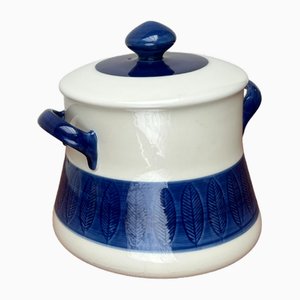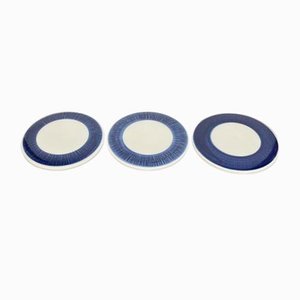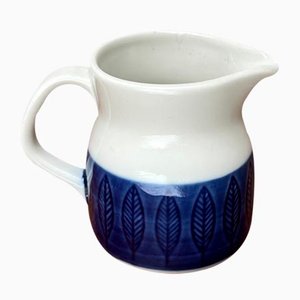
Rörstrand is the second oldest brand of ceramics in Europe and can be found in homes all across Sweden and Europe. Rörstrand’s long legacy includes some of Europe’s most iconic ceramics collections including Swedish Grace, Mon Amie, Ostindia, Filippa K, Carisma, and Eden were designed by renowned designers including Louise Adelborg, Marianne Westman , Signe Perssin-Melin and Monica Förster.
Founded in 1726 under the direction of the German porcelain expert Johann Wolff, the company borrows its name from the castle in Stockholm where the factory was built. Taking inspiration from China and other foreign countries, the first products were glazed in a bright cobalt blue. Rörstrand was the first to produce faience—a porous tin glazed earthenware. In the beginning, however, the company had difficulty turning a profit as more than 20 million Chinese porcelain objects were imported to Sweden in the 18th century.
Throughout the 1740s, Rörstrand continued to develop their brand identity and style, designing new patterns capturing Swedish life, which helped to establish the brand as a Swedish institution. Such patterns included Nordstjärna and the Rehnska, both of which were designed by King Gustav III’s architect Jean-Erik Rehn.
In the 1770s, French Rococo became the popular trend and offered inspiration for Rörstrand’s first complete dinner service, Sepia. By the 19th century Rörstrand was making English-style earthenware, bone china, porcelain, ironstone china, and majolica.
In 1900, Rörstrand gained international success at the World Exhibition in Paris with Alf Wallander’s tableware and urns designed in the Art Nouveau style. Textile artist and designer Louise Adelborg (1885-1971) joined Rörstrand in 1915. Her first success was Vase (1923) which was adorned by a wheat-ear design. The timesless design was later used at the Stockholm Exhibition in 1930 for Sweden’s national tableware service, which was later became known as the Swedish Grace.
In 1976, Rörstrand celebrated 250 years with an anniversary exhibition and the new service Sylvia. That same year, the Rörstrand Museum opened in Lidköping, which contains a collection of 15,000 objects from Rörstrand's rich history. In 1991, Rörstrand’s Karin Björqvist designed an official table service for banquet held for the 90th anniversary of the Nobel Prize.
In 1990 the company was acquired by the Finnish Hackman Group, and was subsequently purchased by Fiskars Sweden in 2007, who own and operate the company today.
Over the past 250 years, many talented ceramist and painters worked for Rörstrand including, Hertha Bengtson who created much-loved classics such as Blå Eld and Koka Blå; Marianne Westman, also known as 'the Porcelain mother', who designed bestsellers such as Mon Amie, Picknick and My Garden; and Olle Alberius; Inger Persson; Carl-Harry Stålhane, Gunnar Nylund , and Isaac Grünewald, among others.
* Images courtesy of Rörstrand




